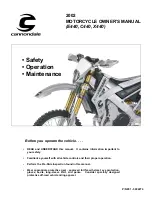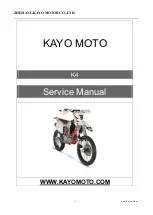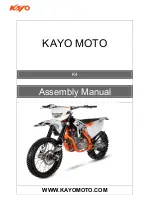
132
&.*44*0/$0/530-4:45&.
*/%*"/$)*&'7*/5"(&4&37*$&."/6"-
When the engine is shut down and the ignition switch is
“off,” the air valve at the air cleaner intake is closed,
blocking the outflow of fuel vapors. Vapors from the air
cleaner housing and fuel tanks are vented through hoses
to the carbon canister where they are absorbed and
stored by the activated charcoal.
When the ignition switch is turned “on” and the start
switch depressed, the air control solenoid is energized
opening the valve and allowing air to flow to the
carburetor. Once started, operating vacuum draws fresh
air through the charcoal where it picks up stored vapors
and delivers them through the purge line to the
carburetor.
The system is equipped with a fuel vapor valve in the
fuel tank at the vent line inlet. The valve prevents the
entrance of liquid fuel into the vent line.
4ZTUFN*OTQFDUJPO
The evaporative system requires very little maintenance.
However, it should be checked at scheduled intervals to
ensure that all components are operational and not
damaged. Check to see that the air valve door moves
freely from closed to full open and does not bind. Check
the carbon canister for cracks or damage. Vent and
purge hoses should be in good condition without cracks
or cuts. Also check the hose routings to make sure that
they are secure and away from hot engine components.
Vent and purge hoses contain flammable fuel
vapors. Hoses damaged by hot engine components
can leak, with possible ignition of escaping vapors
and resulting personal injury.
Replace any damaged components.
$BSCPO$BOJTUFS3FNPWBMBOE
*OTUBMMBUJPO
5PPMSFRVJSFE
Flat-blade screwdriver
Make sure the ignition and engine start switches are
turned “off” and disconnect the battery cables (negative
cable first) to prevent accidental engine start.
Batteries produce hydrogen gas, which is both
flammable and explosive. Keep flames or sparks
away from batteries.
Using a flat-blade screwdriver as assistance, disconnect
the vent and purge hoses at the carbon canister.
To remove the carbon canister, use a flat-blade
screwdriver to release the lock tabs on the canister
bracket. Slide the carbon canister out of the bracket.
Figure 247 — Remove carbon canister
To install the carbon canister, reverse the order of
removal.
"JS7BMWF4PMFOPJE3FNPWBMBOE
*OTUBMMBUJPO
5PPMTSFRVJSFE
0.050" hex bit
1/8" hex bit
Figure 248 — Air valve solenoid assembly
Summary of Contents for 2003 Chief Vintage
Page 1: ...P N 98 173 ...
Page 3: ...ii 05 4 7 5 4 37 6 ...
Page 15: ...6 05 4 7 5 4 37 6 ...
Page 25: ...16 5306 4 005 7 5 4 37 6 Figure 12 Typical operation check screen ...
Page 129: ...120 6 4 45 7 5 4 37 6 BSCVSFUPS MMVTUSBUJPOT Figure 232 Carburetor right side ...
Page 130: ... 7 5 4 37 6 6 4 45 121 Figure 233 Carburetor left side ...
Page 131: ...122 6 4 45 7 5 4 37 6 Figure 234 Carburetor exploded view ...
Page 160: ... 7 5 4 37 6 151 Figure 290 Cylinder head assembly ...
Page 206: ... 7 5 4 37 6 65 197 Figure 409 Clutch assembly ...
Page 235: ......
Page 269: ...260 4 5 4 7 5 4 37 6 44 4 8 3 3 4 Figure 552 Front chassis harness diagram ...
Page 270: ... 7 5 4 37 6 4 5 4 261 Figure 553 Rear chassis harness diagram ...
Page 271: ...262 4 5 4 7 5 4 37 6 5 0 4 45 3 Figure 554 POWERPLUS 100 engine ignition system ...
Page 296: ... 7 5 4 37 6 44 3 8 4 287 Figure 582 Engine assembly ...
Page 299: ...290 05 4 7 5 4 37 6 ...
Page 305: ...296 05 4 7 5 4 37 6 ...
















































